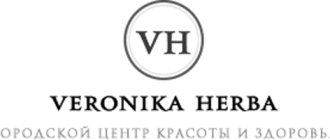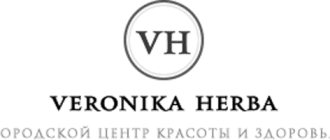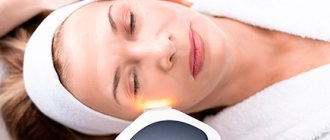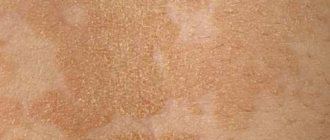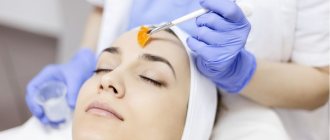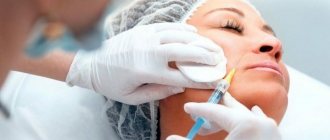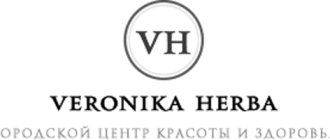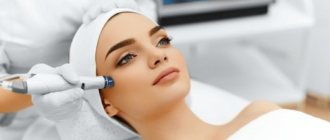Why do pustules appear on the face*?
If pustules* appear on the face, the reasons may be associated with the following internal and external factors4,50:
- Hormonal changes in the body, for example, during adolescence, during pregnancy, during the premenstrual period.
- Gastrointestinal diseases, gynecological diseases (polycystic ovary syndrome, etc.).
- Small red and white rashes may appear due to the use of cosmetics with comedogenic ingredients.
- Improper hygiene (lack or excess) leads to disruption of the normal microbiome, drying out of the epidermis, and the formation of open and closed comedones.
- Injury to the skin as a result of squeezing out acne, rubbing with clothing, etc.
Abscesses* on the face appear, among other things, due to the use of corticosteroids and other medications.
What is post-acne?
Post-acne
– these are the atrophic consequences of acne (scars or dark spots in areas of rash), indicating the depth of skin damage, the strength of inflammation in a particular area and the insufficient ability of the epidermis to self-regenerate. The area of occurrence of such marks is extensive: they can appear on the cheeks, on the forehead, on the nose, on the shoulders, back or chest, and less often on the hips and buttocks.
Reasons for the appearance of post-acne
Stagnant spots due to post-acne are most often formed under the influence of the following factors:
- Protracted moderate to severe acne: deep inflammatory foci are present on the skin for a long time, undermining the resources of the epidermis and causing irreparable damage to it.
- Mechanical damage to the skin: when trying to get rid of post-acne on their own, patients often damage the skin by squeezing out pimples - a stagnant spot or scar often remains at the site of mechanical action.
Types and stages of post-acne: what it looks like
Externally, post-acne appears in the form of stagnant spots of different colors or scars of various shapes:
- Enlarged pores
are the most common signs of problematic skin after acne. Wide pores can be corrected with appropriate care for oily skin types. - Red, purple or blue marks
indicate vascular changes in the skin that occur as a result of mechanical pressure on the tissue when trying to squeeze out deep-seated rashes: comedones, pimples or blackheads. Most often, red marks and bruises remain on the skin in patients with a predisposition to spider veins (with weak capillaries). - Brown spots or post-inflammatory hyperpigmentation (dyschromia)
occur due to the influence of ultraviolet radiation on injured areas of the epidermis - excess accumulation of melanin turns the skin dark. - Atheromas (sebaceous gland cysts) and milia (whiteheads)
are secondary changes in the epidermis that form dense nodules - cysts. - Scars (atrophic, hypertrophic)
are a natural reaction of the skin to deep inflammatory foci. Scars come in different depths, shapes and sizes, and getting rid of them is the most labor-intensive and long-term process. At the site of inflammation, connective tissue appears, located in the deep layers of the epidermis.
There are two types of scars, the manifestation of which depends on the level of natural collagen during the healing process of inflammation:
- Low levels of collagen in the skin provoke the appearance of an atrophic hollow scar. These scars are round (the shallowest), rectangular (deeper) and chipped (the deepest V-shaped scars) in shape.
- High levels of collagen lead to a hypertrophic scar, which can subsequently grow. That is why skin with scars has an uneven relief: atrophic scars are usually sunken, in the form of pits or craters, while hypertrophic scars are convex.
The etiology of post-acne symptoms depends on the depth of the damage: hyperpigmentation occurs due to injuries to the epidermis, while scars appear due to deep damage to the dermal layers of the skin.
How to treat pustules* on the face and will peeling help?
Acne cannot be cured with peelings. Exfoliation is a cosmetic procedure that is performed only during the period of remission of the disease. Small pustules* on the face are a direct contraindication to peeling.
There are 3 types of peelings:
- Mechanical. Dermabrasion is carried out using abrasive particles of different sizes. During the procedure, microcirculation is activated and the natural process of exfoliation begins.
- Chemical. Problem skin is treated with drugs containing various acids. They cause a chemical burn, as a result of which the surface layer of the skin is removed and cell regeneration is triggered.
- Hardware. This includes, for example, laser peels. They are performed using erbium and carbon dioxide lasers, removing the surface layers of the skin. Another type of hardware peeling is microdermabrasion. The technique consists of spraying small mineral particles - quartz, aluminum oxide through a nozzle. Then the particles of the fine abrasive substance are removed along with the exfoliated epithelial cells.
How quickly the peeling will take effect depends, among other things, on its type. It may take about a week for the skin to recover after the procedure. During this period, the skin often turns red, itches, peels, a burning sensation and slight swelling appear. These reactions are normal in the first 7-10 days. It is important that the procedure is carried out by a specialist, since these phenomena can easily lead to an allergy to one of the components of the composition.
How to make a facial peeling roll at home
Now let's talk about how to use the peeling roller for the face:
- Before applying the product, the skin must first be washed well and cleaned of decorative cosmetics. In addition, you should prepare a moisturizer in advance. Since all rolling peels have a chemical composition, after using them you need to immediately saturate the skin with a moisturizer.
- Apply an even thin layer of the drug to a dry and cleansed face.
- Then massage the skin with gentle movements for 3-5 minutes.
- Wash off the composition and distribute the moisturizer over the surface of the face.
It is important to remember that frequency is important for any cosmetic procedure. With irregular use, you are unlikely to quickly see positive changes, and too frequent use, on the contrary, can cause peeling and redness. So how often should you perform procedures with a cleansing composition?
It all depends on your skin type:
- for normal skin – once or twice every seven days;
- for dry skin – once a week;
- for fatty women – three times every seven days.
Another important aspect is the duration of use. In order for positive changes to become noticeable, it will take several months of systematic use of the peeling ray. If you doubt the effectiveness of home treatments, you can always contact a professional in a beauty salon.
Read material on the topic: Gas-liquid skin peeling - beauty without pain and injections
Is it possible to do peeling if rashes appear?
Abscesses* on the face are a sign of an inflammatory process and one of the contraindications to many cosmetic procedures, including peelings.
Abrasive particles and aggressive acids can injure the skin, aggravate the inflammatory process, lead to rupture of pustules and penetration of pus into the dermal tissue, which will worsen the existing pathology.
In this case, it will be even more difficult to cope with the rash. Therefore, peelings cannot be done for pustules* on the face.
Other contraindications to exfoliation are:
- pregnancy and lactation;
- exacerbation of herpes;
- ARI, viral/infectious lesion of the body;
- increased body temperature for any reason;
- the presence of burns or any violations of the integrity of the skin on the treated area;
- high solar activity – period from March to October.
The presence of any contraindication is a reason to refuse the planned procedure.
Can acne marks go away on their own?
Acne spots can go away on their own, but it can take a very long time. Corrective care and beauty salon treatments will help speed up the lightening of spots. Scars will not resolve on their own and will be more difficult to get rid of than spots: the most effective method of smoothing the relief of the epidermis is skin resurfacing. In particularly advanced cases, post-acne treatment is carried out only by clinical methods.
How long does acne last?
The speed of getting rid of stagnant spots and scars depends on the method of treating post-acne: at home or through cosmetic aesthetic procedures, followed by maintaining the normal condition of the skin with corrective care. On average, evening out the tone and texture of the skin after acne takes from 1 to several years, depending on the intensity of post-acne.
Is it possible to quickly remove acne?
An integrated approach (cosmetic procedures + corrective home care) is the most effective way to quickly get rid of post-acne. A course of salon procedures in combination with effective products, for example, based on acids, retinol, keratolytics, will give a noticeable positive result. But even in this case, the time investment will be impressive: unfortunately, it will not be possible to get rid of traces of lingering acne in a couple of weeks.
How is acne treated using Azelik®️ gel?
Many people think that they can simply come to a cosmetologist and “order” the procedure. But that's not true. The cosmetologist conducts an examination and recommends which procedure is best to perform to improve the patient’s skin condition.
A combination of cosmetic procedures, drug treatment and properly selected cosmetics is exactly what is needed for acne-prone skin. Anti-acne therapy should be prescribed by a dermatologist. For mild to moderate acne, this may include the use of azelaic acid, such as Azelik®️ gel.5,9 The drug should be applied to the skin twice a day.5
*inflammatory element of acne
Is facial cleansing allowed for acne?
Manual, hardware, vacuum, ultrasonic, galvanic cleanings help remove impurities and sebaceous plugs from pores, smooth out the relief of the epidermis, and improve cellular respiration.
To achieve better results, hardware techniques are often combined with manual cleaning. However, despite the high effectiveness of facial cleansing, it should be abandoned if there are pustules and other inflammatory elements.170
Middle45
The effect of the median peeling extends to the entire stratum corneum to the basement membrane. The rehabilitation period after the procedure is approximately 7 days. This is due to the fact that after the session, hyperemia lasts for a long time and peeling is observed. The effect is quite long-lasting; the session can be repeated after approximately 12 months.
Remedies for acne and pimples on the face used for medium peeling include:
- 20-35% TCA;
- salicylic acid in concentrations up to 30%.
Peeling Biorepil BioRePeelCl3
Procedures performed
- Hardware lifting
- Injection cosmetology
Professional skills:
- Drawing up individual comprehensive programs for patient management for the identified problem, correction of age-related changes
- Comprehensive facial treatments for all skin types
- Hardware and mechanical facial cleansing
- Chemical superficial and mid-superficial peels
- Treatment of acne and rosacea
- Wrinkle correction with botulinum toxin type A
- Contour plastic surgery, volumetric modeling of the face, their complex use for natural harmonization of appearance
- Mesotherapy and biorevitalization, plasma therapy
- Thread lifting
- Widespread use of high-tech hardware methods in dermatology and cosmetology
Education:
In 2004 she graduated from Vladivostok State Medical University with a degree in general medicine, then underwent internship training in the specialty of dermatovenerology, after which she underwent professional retraining in the specialty of cosmetology.
Additional education:
In 2010, she completed the training course “Mesotherapy using FILORGA preparations”, took part in the seminar “Innovative programs in aesthetic medicine and professional cosmetology”
In 2011, she completed a training course on the use of dermal implants from the Restylane line
In 2012, she completed the certification course “Theory and practice of using botulinum toxin type A in aesthetic medicine” with the right to use this drug in clinical practice, successfully completed the training course “Clinical and anatomical features of correction of the periorbital zone”, and completed a training course on the use of the drug “Aqualyx” »
In 2013, she took part in a scientific and information program on anti-aging therapy “Aesthetic correction of involutional changes in the skin using the drug Botox (botulinum toxin type A-hemagglutinin complex)”, took a course in the technique of face lifting using “Silhouette Litf Soft” threads, took participation in training on chemoexfoliants from the Enerpeel line, took a training course on the use of polydioxanone threads in the correction of age-related changes.
In 2014, she took part in the dissection course: “From fundamental anatomy to sound techniques of aesthetic correction”, took part in the conference “Beauty Expert Day”
In 2016, I took the course “Correction of the midface zone. Lifting methods”, was trained in the correction of age-related changes with lifting threads made of PDO, pre-installed in a cannula, and took a certification course in the technique of using Radiesse in aesthetic dermatology.
In 2022, she took part in the dissection course “From fundamental anatomy to aesthetic facial correction, botulinum therapy, injection contouring, thread technologies
In 2022, she attended an advanced practical seminar “Lifting, reinforcement, dermo-restructuring of facial and body tissues with absorbable caprolactone threads with notches”, took part in the VII Scientific and Practical Conference Teosyal Expert Day, attended the course “Facial Anatomy for a cosmetologist with a course of anatomical dissection”, completed the dissection anatomical course “Safe and effective injection cosmetology: caprolactone and polydeoxanone threads, fillers, botulinum toxin, mesotherapy”, took part in the XIII International Conference: “Latest achievements in injection cosmetology”
In 2022, she completed training in the use of REGENLAB medical products in clinical practice for PRP therapy procedures, and attended the course “Emergency conditions in medical practice” at MGIDO
Superficial45
With this procedure, the active substances work only within the stratum corneum of the epidermis. It belongs to gentle technologies. The technique is recommended for use on young problem skin to get rid of the following problems:
- acne;
- post-inflammatory erythema;
- solar lentigo;
- actinic keratosis;
- moderately manifested photoaging;
- pigment dyschromia.
Recovery after such a procedure is not required; immediately after it you can go about your planned activities. But its effect does not last long.
For superficial peeling, the following products for acne and acne on the face can be used:
- 30-70% AHA;
- cocktails including alpha and beta hydroxy acids;
- salicylic acid with a maximum concentration of 20%
- 5-10% retinoic acid;
- Jessner's solution;
- phytic acid;
- 15% TCA.
